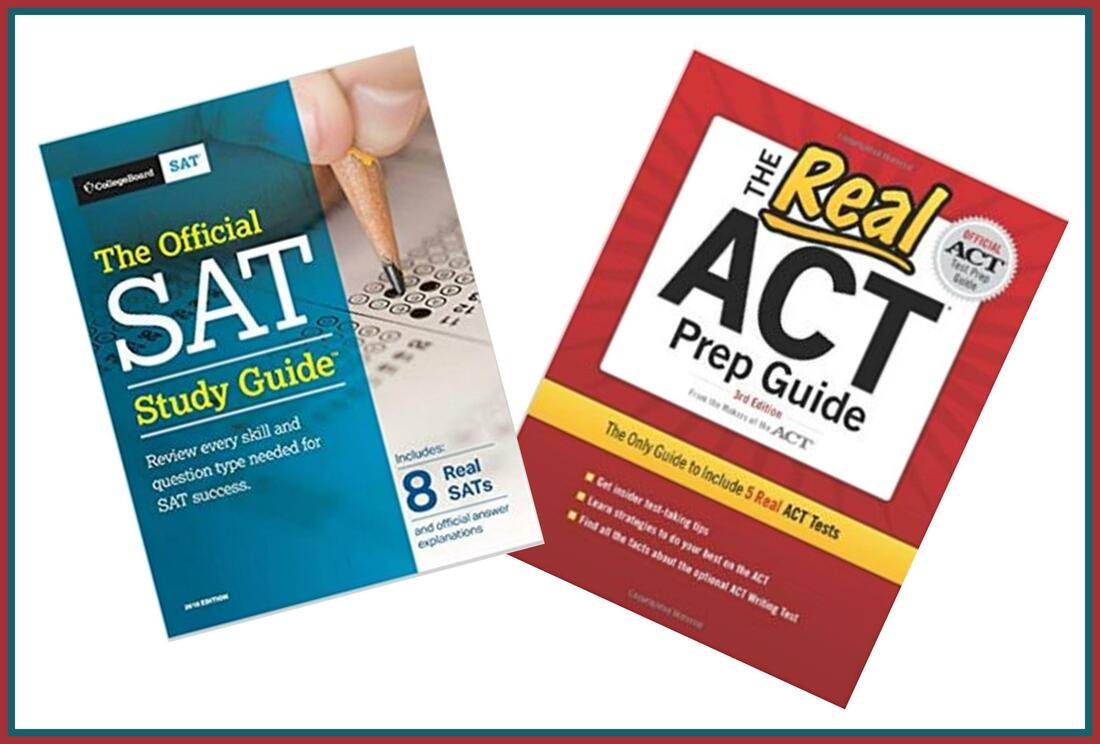| Hello! Welcome to my new blog where I answer scholastic questions and share information to help you navigate the challenging waters of your child’s education. I have been blogging since 2009 when I wrote about Heritage Dance and family life. Two years ago I began writing a blog about math patterns in music when I started writing my “Popular 8 Note Songs” series of music pattern song books. |
One of the main questions I am asked from the parents of high school students is:
Should my student take the SAT or ACT, and when?
| The SAT and ACT are both college entrance exams, and students have the option of taking either one. However, the two tests are very different. But first of all, only students who plan to attend a four year university after high school need to take a college entrance exam. There are certainly other options after high school which include going to community college, taking a year off to work or travel, joining the military or using the money one would have received for college to start a business instead. |
How are the SAT and ACT different?
| The SAT (Scholastic Assessment Test): This test has 1600 points. In the math section of the SAT, students are given a list of formulas, so not all formulas need to be memorized. The test focuses mainly on algebra, and it has two sections with one section that must be completed without a calculator. In the reading section, the SAT will often tell you where a section is found, and it requires you to find evidence to answer questions. The writing section focuses on vocabulary and writing style. The difficulty of the SAT test questions increases throughout the test. The easiest questions come first. The SAT essay section is optional but some colleges require it. Students have 50 minutes to complete an essay where they write about how the author of a passage uses evidence, such as facts or examples, to support their claims. | The ACT (American College Testing): This test has 36 points. In the math section of the ACT, students must memorize all the formulas. The math problems also cover more geometry, logarithms, trigonometry and matrixes in addition to algebra. In the reading section, the ACT requires that you remember where information is located, and the writing section focuses on grammar and sentence structure. The difficulty of the ACT test questions are sorted randomly on the test, so being able to skip difficult questions and come back to them is an important skill. The ACT essay is optional and students are given 40 minutes to evaluate three different perspectives and then provide their own perspective and relate it to one of the perspectives given in the prompt. The ACT also has a science section where students must read charts and graphs, A strong science vocabulary is helpful. |
About fifty percent of students take the SAT and fifty percent take the ACT. Students today are
I highly recommend that students choose the test that fits them the best and spend their time on just that one test. It is really a numbers game. The more time a student spends practicing, the better he or she can do. Some students need to do twenty practice tests to be able to test well and hit their top score. Parents can play an important part by checking on their child’s weekly SAT or ACT homework. And there should be weekly (or daily) homework. Studying for the SAT or ACT should be treated like a class. The score is that important.
| ‘But where will the time come from?’ you might ask. Considering that many students play a sport, or for some students, multiple sports, the extra study time may need to come from giving up a sport or another activity. The average number of hours that a student spends on each sport is 300 hours. If that student gave up one season of one sport, that would give the student 300 hours to invest somewhere else. One hundred hours could go |
Extra studying to raise a score just a few points can result in a huge increase in college and scholarship options. Eighty percent of students who go to college fall in a 300 point range for SAT and a 9 point range for ACT. On the ACT, a score of 23 puts a student in top third of test takers. An ACT score of 26 puts that same student in top sixth. Three points make a difference.
The best time to make a decision on whether your student will take the SAT or ACT is in the spring of their sophomore year. This is the time to purchase both an SAT Test Prep Book and an ACT Test Prep Book and take a mock trial test of each at home (NOT an actual proctored test at a school) to get a baseline score. After reviewing the test results, I usually suggest that students pick one or the other to focus on. For most students, there is not enough time to study and try to take both official tests.
| If the sophomore student plans to take the PSAT during the fall of their junior year, then a study program started in the early summer between the sophomore and junior year is helpful. Otherwise, I recommend students start studying for the college entrance examination of their choice in the late summer or early fall of their junior year so they are ready to take their first proctored test in December of their junior year. This will |
But the college entrance exam is just one piece of the college admissions puzzle. Grades and GPA (Grade Point Average) are just as important, and it is crucial that a student keep his or her grades high. Eighty percent of college admission requirements are based on a student’s GPA, SAT or ACT, and AP (Advanced Placement) scores. For students hoping to head off to four year university, grades earned during the spring of the junior year count the most since the college application process begins in the fall of a student’s senior year.
It is important to take AP (Advanced Placement) classes and do well in those classes. When I was in school, (many moons ago!), if you had a 4.0, you were at the top of your class. With AP class grade inflation, this is no longer the case. With the advent of AP classes, schools now award an “A” in AP classes with as many as 4.5 or 5 points instead of a 4.0 which means doing well in AP classes in high school can push a top student’s overall GPA to as high as a 4.7.
| There are other reasons for taking AP classes. The AP credit may allow you to: graduate early from college (which saves money), change majors without missing the graduation date goal, participate in a college semester abroad, do an internship and take fewer classes, or complete a double major without slowing down your graduation date. (Side note – did you know that only 59% of students finish their degree in four years? Delayed |
The first person I helped with college test prep was my eldest, homeschooled daughter over fifteen years ago. Being an early adopter of the homeschooling lifestyle, I did not have nearly as many resources as parents do today. But SAT and PSAT study guides were available, so I purchase a stack of them and began taking test after test myself so that I could understand how the testing process worked, and so I could teach it to my daughter. We incorporated SAT and PSAT study into my daughter’s daily homeschool schedule which included writing daily timed essays. The result of months of preparation were her scores that put her in the top 2% of all test takers on the SAT, and she earned a Merit Scholarship Commendation Award.
As I review her successes on the exams and the successes of the many students I have tutored in the past, I have learned that it takes several key activities to optimize students’ ability to do their very best on the test: English and math review, essay writing practice, testing skills training, extended time practicing and taking multiple mock tests, parent involvement in checking weekly homework and at least two (but preferably more) actual proctored exams.
Most students struggle to do all of this on their own. Many need extra academic assistance and an accountability partner who helps keep them moving forward toward their goals.
If you live in the San Luis Obispo, California or Paso Robles, California area and your student would like some help with the SAT or ACT, please feel free to contact me about tutoring options.
| Always keep in mind – there are many paths in life, and not all involve college. Also, there are over three thousand colleges in the United States alone. There is a place and path for every student. Wishing you joy on your journey, Debra Newby www.UpandOvered.com Debra Newby is a credential teacher in biology and chemistry, an academic tutor, a life coach and a parent mentor on California’s Central Coast. If you would like more information on the ways she can help you navigate the adventure of raising children, please contact her at [email protected] |






 RSS Feed
RSS Feed
